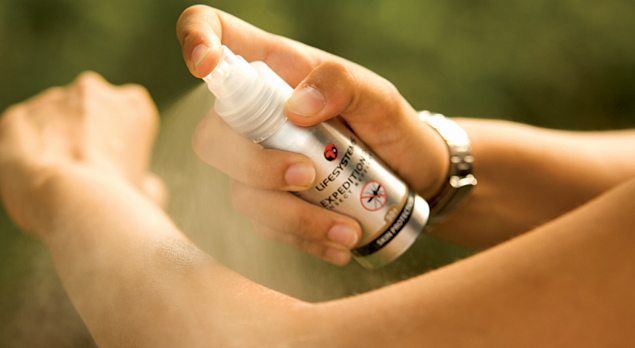Don't Get Eaten Alive

The allure of long summer days and the start of the summer holiday season will be greeted with glee by thousands of outdoor enthusiasts, but for the unprepared these happy times can be quickly soured by the scourge of biting insects! From the remote corners of the British Isles to exotic sun soaked beaches, blood thirsty insects are prevalent throughout the summer season and can quickly turn the perfect get away into a nightmare.
However, fear not, as with a few precautionary steps and armed with suitable deterrents you can make sure that these little critters won’t spoil your enjoyment of the great outdoors.
Know your enemy!
There are a number of biting insects out there that can cause you irritation, discomfort and potential harm, but the top three that you are likely to encounter when venturing out and about this summer are ticks, midges and mosquitoes.

Ticks: These tiny parasites feed on the blood of mammals (including humans), reptiles and birds. They are unable to fly or jump, but have special hooks on their legs that allow them to latch onto a passing host. They are particularly prevalent in vegetated areas where grazing animals such as sheep and deer are present. Ticks can carry a number of nasty diseases including Lyme disease.

Midges: Midges are tiny swarming insects that occur across large portions of the globe. It is the female midge that bites and although they don’t transmit diseases they are capable of causing considerable distress and irritation! They favour damp, cool conditions and are unfortunately abundant in many picturesque wilderness locations.

Mosquitoes: The notorious mosquito is a biting insect that has the potential to cause much more serious harm than just the annoyance of its bite due to its ability to transmit harmful diseases such as malaria and yellow fever. Travellers to high risk areas should seek professional health care advice before travelling as well as taking precautions to avoid being bitten.
Prevention is better than cure…

The best defence against the discomfort and the potential infection associated with some biting insects is to avoid getting bitten in the first place:
- Wear suitable clothing to cover and protect exposed skin. Clothing can be treated with an anti-mosquito treatment to help repel biting insects such as the Craghoppers Nosilife range. Head nets and hats offer welcome relief in areas where midges and other biting insects are common.
- Use a skin applied insect repellent. Lifesystems provide a comprehensive range of repellents from the handy sized Plus 50 (25ml) through to their Expedition+ (100ml) for use in high risk areas.
- In addition to repellents the use of mosquito nets and portable insect killers are very effective ways of controlling biting insects in your chosen accommodation.
Always be prepared for the worst…
- If you do get bitten it’s advisable to use a bite relief product to help relieve swelling and itching – the scratching of bites can result in infection so a soothing product is highly recommended. If you get bitten by a tick you need to remove it as quickly as possible so remember to regularly check your skin and hair when travelling in high risk areas.
- Make sure you have the necessary products with you to ease and sooth the irritation of bites if and when they do occur.
- When travelling in tick prone areas, the carrying and use of a tick-removal tool\ is highly recommended as particular care should be taken when removing ticks to avoid the risk of infection.








